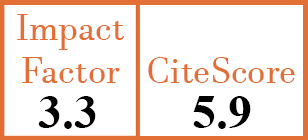Full Papers
Early disease activity suppression and younger age predict excellent outcome of recent-onset rheumatoid arthritis patients treated with conventional disease modifying anti-rheumatic drugs.
I. Contreras-Yáñez, M. Rull-Gabayet, V. Pascual-Ramos
CER4796
2012 Vol.30, N°3
PI 0402, PF 0408
Full Papers
Free to view
(click on article PDF icon to read the article)
PMID: 22510514 [PubMed]
Received: 31/05/2011
Accepted : 27/10/2011
In Press: 26/06/2012
Published: 26/06/2012
Abstract
OBJECTIVES:
Sustained remission (SR) is the target of treatment offered to patients with rheumatoid arthritis (RA). The objective of the present paper is to describe predictors of favourable outcomes in a cohort of early RA patients.
METHODS:
Data from 89 patients with 3 years of consecutive assessments and traditional treatment were analysed. SR was defined as ≥6 consecutive months with 2011 ACR/EULAR remission criteria. Excellent outcome (EO) was defined according to patient`s perception. Descriptive statistics, logistic regression models and Cox regression were used.
RESULTS:
At baseline, patients were predominantly females (n=78), had rheumatoid factor (n=70) and (mean±SD) age of 38.8±13.6 years. After (mean±SD) 37.1±2.5 months, 75 patients achieved ≥1 SR state and 35 an EO. The former had lower disease activity, disability and comorbidity and better functional status at baseline than their counterparts (p≤0.05); they also accumulated lesser disability (p≤0.03). Lower C-reactive protein and disease activity and lesser comorbidity predict SR (p≤0.04). Patients with EO were younger, better educated, had lower disease activity, better functional status and lesser comorbidity at baseline than their counterparts (p≤0.05). They achieved a first sustained remission state (p≤0.001) sooner and accumulated lesser disability and incident erosive disease (p≤0.002). Younger age and lower disease activity were prognosticators of EO (p≤0.02). When age, baseline disease activity and time to first SR were investigated as predictors of EO, younger age (HR:0.95, 95% CI: 0.91–0.98, p=0.003) and earlier SR (HR:0.49, 95% CI: 0.39–0.61, p≤0.001) were relevant.
CONCLUSIONS:
Younger patients with lower disease activity achieved earlier SR which, in addition to age, was predictor of EO.


